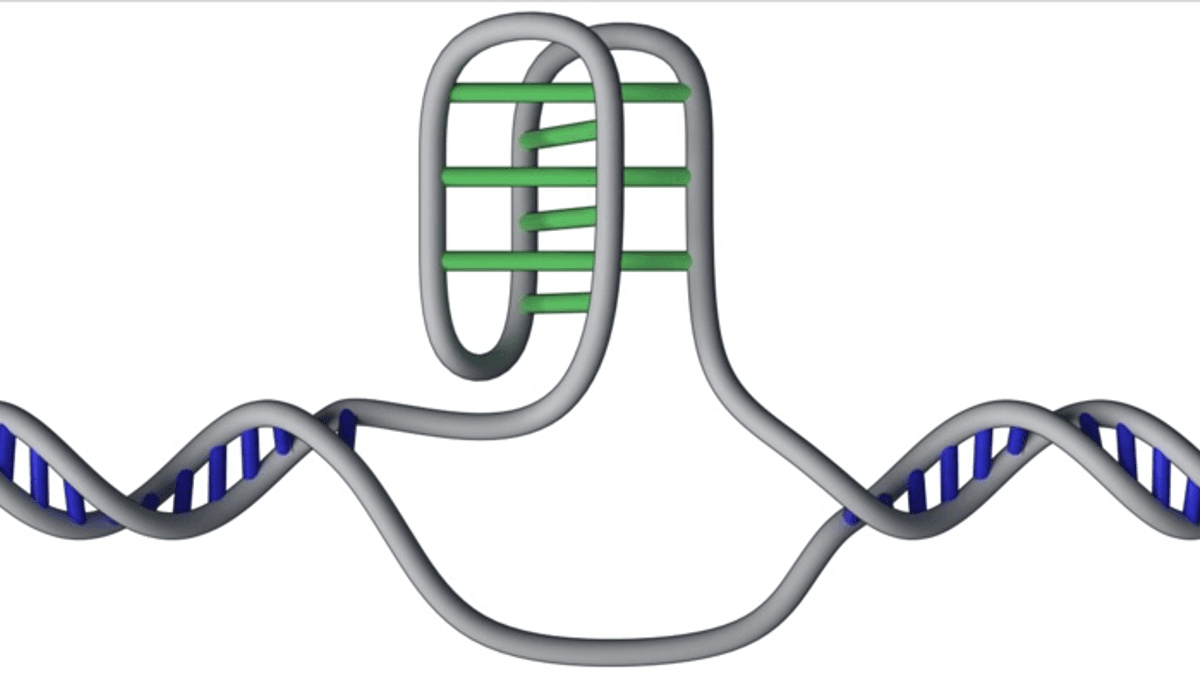
The locations of “knot-like structures” in the human genome have been mapped for the first time. Known as i-motifs, these odd shapes were reported to exist in 1993, but initially treated with suspicion. The discovery of how frequent they are, and their locations, suggests they play important roles in our health, but can also lead to disease.
The double helix structure of DNA is so famous it serves as a sort of visual shorthand. However, in the 1990s geneticists started to suspect it is sometimes interrupted by secondary structures they called i-motifs, whose existence outside the lab was only confirmed in 2018.
Specifically, instead of the four bases from which DNA is constructed linking to each other like normal (adenine to thymine on the opposite strand, cytosine to guanine) cytosines on the same strand hook up. The result is a brief section that sticks out of the double helix as a four-stranded structure.
Professor Daniel Christ of the Garvan Institute of Medical Research told IFLScience, “I-motifs were first discovered in the laboratory under test tube conditions (in vitro conditions). These conditions were somewhat different (more acidic) from those observed inside cells. This had initially raised questions as to whether i-motifs existed in cells. However, once we had generated a specific antibody for the i-motif structure, we and others were able to demonstrate they do exist in human cells.” Christ added that around 25,000 i-motifs have been found in rice by another team, so it is definitely something common across very different organisms.
Certain patterns of the four bases have been found to be more prone to forming i-motifs, but scientists have remained unsure of why they exist or how common they are. Now Christ’s team have mapped the i-motifs on the human genome and found they’re surprisingly common.
“In this study, we mapped more than 50,000 i-motif sites in the human genome that occur in all three of the cell types we examined,” Christ said in a statement. “That’s a remarkably high number for a DNA structure whose existence in cells was once considered controversial. Our findings confirm that i-motifs are not just laboratory curiosities but widespread – and likely to play key roles in genomic function.”
What those functions are will take a long time to resolve, but the locations of the i-motifs offer some clues. “We discovered that i-motifs are associated with genes that are highly active during specific times in the cell cycle. This suggests they play a dynamic role in regulating gene activity,” said first author Cristian David Peña Martinez, but Christ indicated to IFLScience the specifics remain unclear.
“We also found that i-motifs form in the promoter region of oncogenes, for instance the MYC oncogene, which encodes one of cancer’s most notorious ‘undruggable’ targets,” Peña Martinez added. Potentially then, a way to attack cancers that are currently particularly resistant to treatment could be through making i-motifs unravel. If, as seems likely, they serve a function elsewhere in the DNA, this might need to be very carefully targeted, however. Nevertheless, co-author Dr Sarah Kummerfeld said, “It might be possible to design drugs that target i-motifs to influence gene expression, which could expand current treatment options.”
If i-motifs formed in response to specific conditions, such as stress in the womb, this could be another non-genetic way we are affected by our environment. However, Christ told IFLScience, “There is currently no data indicating non-hereditary components, and we observed similar number of i-motifs among three human cell lines of different origin, indicating relatively broad conservation. “
The study is published in The EMBO Journal.
Source Link: There Are 50,000 Knots In Your DNA And They’ve Just Been Mapped